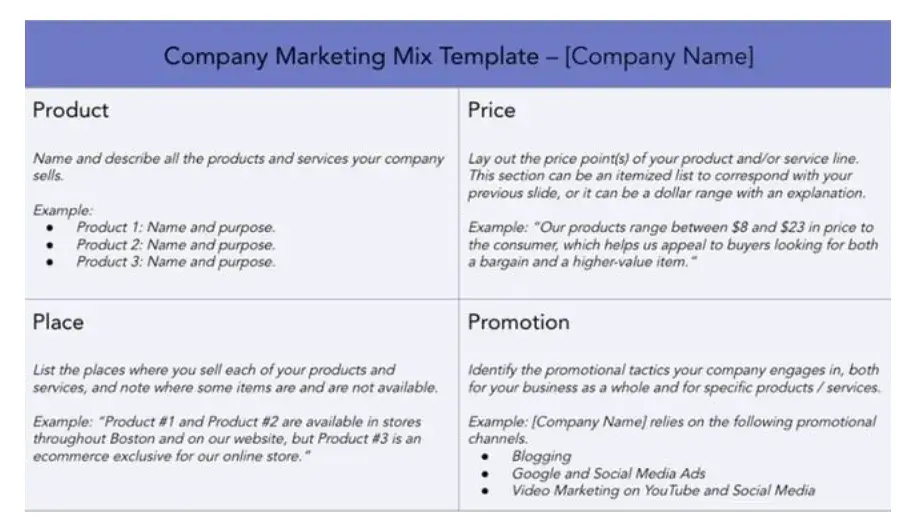

Strategy Studies
What is marketing strategy.
Home > Back
Specialties

In today’s fast-paced and competitive business world, having a clear and effective marketing strategy is essential for success. But what exactly is a marketing strategy, and why is it so important? In this comprehensive guide, we will explore the ins and outs of marketing strategy, from its basics to its execution, success stories, common mistakes to avoid, and what the future holds for this critical aspect of business.
Table of Contents
The Basics of Marketing Strategy
Understanding the concept of marketing.
Marketing is the process of promoting and selling products or services to a target audience. It involves various activities such as advertising, market research, product development, and customer engagement. Marketing strategy is the carefully planned approach that guides these activities to achieve specific business goals.
The role of strategy in marketing
A marketing strategy acts as a roadmap, outlining the steps a business needs to take to reach its objectives. It provides a clear direction, ensuring that marketing efforts are aligned with the overall business plan. Without a well-defined strategy, marketing can be unfocused and ineffective.
Components of a Marketing Strategy
Target audience identification.
One of the first steps in creating a marketing strategy is identifying your target audience. Who are your ideal customers? What are their needs, preferences, and behaviors? Understanding your audience is crucial for crafting messages that resonate.
Market research and analysis
Thorough market research is the foundation of a successful strategy. It involves studying your industry, competitors, and trends to make informed decisions. Market analysis helps you identify opportunities and threats.
Setting clear objectives
What do you want to achieve with your marketing efforts? Whether it’s increasing brand awareness, boosting sales, or expanding into new markets, setting clear objectives helps measure success.
Competitive analysis
Understanding your competitors’ strengths and weaknesses can help you differentiate your business. Analyze their marketing strategies to find opportunities for improvement.
Positioning and differentiation
What sets your business apart from the competition? Effective positioning and differentiation are key components of a marketing strategy. Highlight your unique selling proposition (USP) to attract customers.
Budget allocation
Allocate your marketing budget wisely. Consider the cost of various marketing channels, such as digital advertising, content marketing, or social media campaigns, and allocate resources accordingly.
Types of Marketing Strategies
Digital marketing.
Digital marketing leverages online channels like websites, social media, email, and search engines to reach customers. It’s a versatile strategy with numerous tools and tactics.
Content marketing
Content marketing involves creating and sharing valuable content to attract and engage your target audience. It’s an effective way to build brand authority and trust.
Social media marketing
Social media platforms are powerful tools for reaching a wide audience. Effective social media marketing involves consistent content sharing and engagement with followers.
Influencer marketing
Collaborating with influencers can expand your reach and credibility. Choose influencers whose values align with your brand.
Traditional marketing
Traditional marketing methods like print ads, TV commercials, and direct mail still have their place, depending on your target audience.
Guerrilla marketing
This unconventional strategy relies on creativity and imagination to capture attention. It’s often low-cost and highly memorable.
Creating an Effective Marketing Strategy
Defining your unique selling proposition (usp).
Your USP is what makes your business special. It’s the reason customers should choose you over competitors. Clearly define and communicate your USP in your marketing strategy.
Crafting a compelling value proposition
Your value proposition explains the benefits customers will receive from your product or service. It should resonate with your target audience and address their pain points.
Selecting the right marketing channels
Choose the channels that align with your target audience’s preferences. For instance, if your audience is young and tech-savvy, prioritize digital marketing.
Setting a budget and timeline
Allocate resources according to your strategy’s priorities. A budget and timeline keep your marketing efforts on track.
Executing and Monitoring the Strategy
Implementation of the strategy.
Once your strategy is in place, it’s time to put it into action. Ensure all team members understand their roles and responsibilities.
Key performance indicators (KPIs)
Establish KPIs to measure the success of your strategy. These could include website traffic, conversion rates, social media engagement, or sales figures.
Continuous monitoring and adjustment
The business landscape is ever-changing. Regularly assess your strategy’s performance and adjust it as needed to stay competitive.
Success Stories: Companies with Effective Marketing Strategies
Apple’s marketing strategy revolves around innovation, simplicity, and creating a strong emotional connection with its customers. Their product launches are highly anticipated events, showcasing the power of effective marketing.
Nike’s “Just Do It” slogan has become iconic. They’ve successfully built a brand that stands for inspiration, motivation, and athletic excellence through their marketing efforts.
Coca-Cola’s timeless branding and memorable advertising campaigns have made it one of the most recognized brands globally. Their marketing strategies focus on building an emotional connection with consumers.
Common Mistakes in Marketing Strategy
Lack of target audience clarity.
Not understanding your audience can lead to wasted resources and missed opportunities.
Neglecting market research
Skipping market research can result in poor decision-making and ineffective campaigns.
Ignoring competitors
Failing to analyze competitors can lead to being outmaneuvered in the market.
Overlooking digital opportunities
In today’s digital age, neglecting online channels can be a major oversight.
Not adapting to changing market dynamics
A rigid strategy that doesn’t adjust to market changes can hinder growth.
The Future of Marketing Strategy
Trends in marketing.
Marketing is evolving with new trends like personalized marketing, video content, and AI-driven automation.
Impact of technology and data
Advances in technology and access to data are shaping the way businesses connect with customers.
In conclusion, a well-crafted marketing strategy is the backbone of a successful business. It guides your efforts, helps you stand out in a crowded market, and drives growth. Whether you’re a small startup or a global corporation, investing in a robust marketing strategy is a key step toward achieving your business goals.

Get the Strategies
Get the latest posts delivered to your inbox for free.
Ian has marketed for some of the world's best-known brands like Hewlett-Packard, Ryder, Force Factor, and CIT Bank. His content has been downloaded 50,000+ times and viewed by over 90% of the Fortune 500. His marketing has been featured in Forbes, Inc. Magazine, Adweek, Business Insider, Seeking Alpha, Tech Crunch, Y Combinator, and Lifehacker. With over 10 startups under his belt, Ian's been described as a serial entrepreneur— a badge he wears with pride. Ian's a published author and musician and when he's not obsessively testing the next marketing idea, he can be found hanging out with family and friends north of Boston.
Subscribe to Forward Weekly
Related posts.

The Ultimate Guide to Twitter Marketing

How to Create a Winning Facebook Marketing Strategy

The Complete Guide to Instagram Marketing

The Ultimate Guide to Social Media Advertising
Leave a Reply
Get The Marketing Strategies in Your Inbox
Sign up for our 1x a week newsletter (no spam!)
Popular Posts

Get the Guide
You'll learn how to:
- Generate more demand for your product or service
- What channels to start with at first
- Strategies to maximize your lead generation
- And so much more!

Houston, we have a problem... you need to login first!
Register For This Site
A password will be e-mailed to you.
Get In-Depth Marketing Strategies
Sign up to get in-depth marketing strategies, tactics, and case studies delivered right to your inbox.
100% privacy. We will never spam you!
Copyright @ MarketingStrategy.com 2024. All Right Reserved.
How to Create a Complete Marketing Strategy in 2025 [Data + Expert Tips]
Updated: October 10, 2024
Published: October 16, 2019
We marketers know that creating a marketing strategy is essential to effectively nurture our customers, improve our business’s bottom line, and increase the ROI of our efforts.

A marketing strategy is especially critical if you want to use the highest ROI trends we've seen in 2024 : short-form video and AI. To get powerful results, you must carefully weave both emerging trends and proven strategies into your plan.
![what is marketing strategy essay Download Now: Free Marketing Plan Template [Get Your Copy]](https://no-cache.hubspot.com/cta/default/53/aacfe6c7-71e6-4f49-979f-76099062afa0.png)
I’ll share the critical components of a complete marketing strategy, followed by some examples for inspiration.
Table of Contents
What is a marketing strategy
Marketing strategy components, marketing strategy process, why is a marketing strategy important, examples of successful marketing strategies, recommended resources.
A marketing strategy covers a company’s overall approach for promoting its brand to a target audience. The process involves research, goal-setting, and positioning.
A completed marketing strategy typically includes brand objectives, target audience personas, marketing channels, key performance indicators, and more.
I’ve found a marketing strategy will:
- Align your team to specific goals.
- Help you tie your efforts to business objectives.
- Allow you to identify and test what resonates with your target audience.
- Empower you to capitalize on emerging trends.
The last one is especially important. Keeping up with marketing trends is important for your strategy, but it could be a full-time job.

Free Marketing Plan Template
Outline your company's marketing strategy in one simple, coherent plan.
- Pre-Sectioned Template
- Completely Customizable
- Example Prompts
- Professionally Designed
Download Free
All fields are required.
You're all set!
Click this link to access this resource at any time.
Marketing Strategy vs. Marketing Plan
I like to think of a marketing strategy as outlining the long-term goals and overall approach, while a marketing plan covers the specific actions and tactics to achieve those goals.
In other words, marketing strategy guides a business's overall marketing efforts. It includes goal-setting, market and competitor research, and messaging and positioning for a brand.
For example, say you’re creating a marketing strategy for a new fashion brand. Your strategy might target young Gen Z students and position the brand as trendy and affordable.
But, a strategic marketing plan is a detailed tactical roadmap that outlines the specific actions and tactics that should achieve the marketing strategy’s goals.
For example, the marketing plan for the fashion brand mentioned above might include:
- Targeted social media campaigns.
- Influencer partnerships.
- Online advertising timeline.
Both a marketing strategy and a marketing plan are essential for a business’s success.
To succeed in the fast-paced marketing world — and maintain a sense of relevance with your audience — it’s vital to stay ahead of the curve.
Below, I’m going to show you step by step how to create a comprehensive marketing strategy. But first, let’s go over the individual components that make up a strong marketing strategy.
- Marketing Mix
- Marketing Objectives
- Marketing Budget
- Competitive Analysis
- Segmentation, Targeting, & Positioning
- Content Creation
- Metrics & Key Performance Indicators
1. Marketing Mix

Buyer Persona Templates
Organize your audience segments and make your marketing stronger.
- Learn about personas.
- Conduct persona research.
- Create targetted content.
- Build your own personas.
4. Conduct competitive analysis.
Now that you have an understanding of your customers, it’s time to see who you’re competing with to get their attention.
To begin your competitive analysis, start with your top competitors. Reviewing their websites, content, ads, and pricing can help you understand how to differentiate your brand. I think it’s also a useful way to find opportunities for growth.
But how do you know which competitors are most important? This competitive analysis kit with templates will walk you through the process. I like it because it will help you choose and evaluate the strengths, weaknesses, and strategies of your competitors.
This process will help you find market gaps, spot trends, and figure out which marketing tactics will be most effective. Competitive analysis can also offer valuable insights into pricing, positioning, and marketing channels.
5. Develop key messaging.
You’ve figured out who you’re talking to, what they’ve already heard, and what they want to hear. Now, it’s time to share your brand’s unique value proposition .
In this step, you’ll craft key messaging that shows the benefits of your product or service that resonate with your target audience. This process should show off the research and work you have done up to this point. It should also incorporate your creativity, inventiveness, and willingness to experiment.
In my experience, well-crafted key messaging:
- Sets businesses apart from the competition.
- Resonates with the target audience.
- Is flexible enough to be consistent across all marketing channels.
- Builds brand credibility.
- Creates an emotional connection with customers.
- Influences buying decisions.
The key messaging in your marketing strategy is critical to driving engagement, loyalty, and business growth. These value proposition templates can help if you’re not sure how to draft this important messaging.
6. Choose your marketing channels.
You know what you have to say. Now, decide on the best marketing channels for your message. Your top goal for this stage of your strategy is to align your channel choices with your target persona’s media consumption habits.
Start with media channels you’re already using. Then, consider a mix of traditional and digital channels such as social media, TV, email marketing, podcast ads, SEO, content marketing, and influencer partnerships.
To streamline this process, I like to think of your assets in three categories — paid, owned, and earned media.


7. Create, track, and analyze KPIs.
Once you have a clear outline of your marketing strategy, you’ll need to think about how you’ll measure whether it’s working.
At this stage, you’ll shift from marketing detective to numbers nerd. With a little planning and prep, your analytics can unveil the mysteries of marketing performance and unlock super insights.
Review your strategy and choose measurable KPIs to track the effectiveness of your efforts. Pick a marketing analytics software solution that works for your team to collect and measure your data.

I highly recommend getting started with Crazy Egg. You’ll be able to identify “attention hotspots” on your product pages, track ad campaign traffic on your site, and understand if shoppers are clicking where you want them to.
You can even make sure your “Buy Now” buttons are in the best place.
Crazy Egg also offers recordings, A/B testing, and more to help make sure your website is offering the best user experience.
Best for: If your marketing strategy includes optimizing your website, Crazy Egg is the tool for you.
Pricing : Plus - $99/month; Pro - $249/month; Enterprise - $499/month.
What to Expect After Following Your Marketing Process Steps
Ultimately, creating a complete marketing strategy isn’t something that can happen overnight. It takes time, hard work, and dedication to confirm you’re reaching your ideal audience — whenever and wherever they want to be reached.
Stick with it (and use some of the resources I’ve included in this post), and over time, research and customer feedback will help you refine your strategy to make sure you’re spending most of your time on the marketing channels your audience cares most about.
Editor's note: This post was originally published in October 2019. It has been updated for freshness and accuracy.
Don't forget to share this post!
Related articles.

I Used AI to Create a Marketing Plan 2 Ways — Here’s How You Can Too

What is Marketing, and What's Its Purpose?

The 9 Best Marketing Frameworks You Need to Know
![what is marketing strategy essay Sustainable Marketing: Key Principles & How to Leverage It [+ Examples]](https://www.hubspot.com/hubfs/sustainable-marketing-1-20241014-8761093.webp)
Sustainable Marketing: Key Principles & How to Leverage It [+ Examples]

Digital Marketer Jenna Kutcher Thinks You're Overcomplicating It

The Ultimate Guide to Marketing Strategies & How to Improve Your Digital Presence
![what is marketing strategy essay 5 Steps to Create an Outstanding Marketing Plan [Free Templates]](https://www.hubspot.com/hubfs/marketingplan_20.webp)
5 Steps to Create an Outstanding Marketing Plan [Free Templates]
![what is marketing strategy essay 4 Clever Olympics Marketing Campaigns [+Top Takeaways]](https://knowledge.hubspot.com/hubfs/best-olympic-marketing-campaigns-1-20240809-9542066.webp)
4 Clever Olympics Marketing Campaigns [+Top Takeaways]
![what is marketing strategy essay What is a Marketing Plan & How to Write One [+ Examples]](https://www.hubspot.com/hubfs/marketing-strategy-examples-1-20240801-4880441-1.webp)
What is a Marketing Plan & How to Write One [+ Examples]
![what is marketing strategy essay 6 Steps to Create an Outstanding Marketing Plan [Free Templates]](https://www.hubspot.com/hubfs/marketingplan_20.webp)
6 Steps to Create an Outstanding Marketing Plan [Free Templates]
Marketing software that helps you drive revenue, save time and resources, and measure and optimize your investments — all on one easy-to-use platform
When Marketing Is Strategy
by Niraj Dawar
Summary .
It’s no secret that in many industries today, upstream activities—such as sourcing, production, and logistics—are being commoditized or outsourced, while downstream activities aimed at reducing customers’ costs and risks are emerging as the drivers of value creation and sources of competitive advantage. Consider a consumer’s purchase of a can of Coca-Cola. In a supermarket or warehouse club the consumer buys the drink as part of a 24-pack. The price is about 25 cents a can. The same consumer, finding herself in a park on a hot summer day, gladly pays two dollars for a chilled can of Coke sold at the point-of-thirst through a vending machine. That 700% price premium is attributable not to a better or different product but to a more convenient means of obtaining it. What the customer values is this: not having to remember to buy the 24-pack in advance, break out one can and find a place to store the rest, lug the can around all day, and figure out how to keep it chilled until she’s thirsty.
Partner Center
- Search Search Please fill out this field.
What Is a Marketing Strategy?
- How It Works
- Marketing Strategies vs. Plans
- Creating a Marketing Strategy
The Bottom Line
- Marketing Essentials
Marketing Strategy: What It Is, How It Works, and How to Create One
Investopedia contributors come from a range of backgrounds, and over 25 years there have been thousands of expert writers and editors who have contributed.
:max_bytes(150000):strip_icc():format(webp)/Group1805-3b9f749674f0434184ef75020339bd35.jpg)
- How to Start a Business: A Comprehensive Guide and Essential Steps
- How to Do Market Research, Types, and Example
- Marketing Strategy: What It Is, How It Works, How To Create One CURRENT ARTICLE
- Marketing in Business: Strategies and Types Explained
- What Is a Marketing Plan? Types and How to Write One
- Business Development: Definition, Strategies, Steps & Skills
- Business Plan: What It Is, What's Included, and How to Write One
- Small Business Development Center (SBDC): Meaning, Types, Impact
- How to Write a Business Plan for a Loan
- Business Startup Costs: It’s in the Details
- Startup Capital Definition, Types, and Risks
- Bootstrapping Definition, Strategies, and Pros/Cons
- Crowdfunding: What It Is, How It Works, and Popular Websites
- Starting a Business with No Money: How to Begin
- A Comprehensive Guide to Establishing Business Credit
- Equity Financing: What It Is, How It Works, Pros and Cons
- Best Startup Business Loans
- Sole Proprietorship: What It Is, Pros & Cons, and Differences From an LLC
- Partnership: Definition, How It Works, Taxation, and Types
- What is an LLC? Limited Liability Company Structure and Benefits Defined
- Corporation: What It Is and How to Form One
- Starting a Small Business: Your Complete How-to Guide
- Starting an Online Business: A Step-by-Step Guide
- How to Start Your Own Bookkeeping Business: Essential Tips
- How to Start a Successful Dropshipping Business: A Comprehensive Guide
Investopedia / Daniel Fishel
A marketing strategy refers to a business’s overall plan to convince customers to buy its products or services. A marketing strategy determines how to reach prospective consumers and turn them into customers. It contains the company’s value proposition , key brand messaging, data on target customer demographics, and other high-level elements.
A thorough marketing strategy covers the four Ps of marketing: product, price, place, and promotion.
Key Takeaways
- A marketing strategy is a business’s plan for reaching prospective consumers and turning them into customers of their products or services.
- Marketing strategies should revolve around a company’s value proposition and make use of unique brand messaging.
- The ultimate goal of a marketing strategy is to achieve and communicate a sustainable competitive advantage over rival companies.
- A marketing strategy is a big-picture idea that informs smaller, short-term marketing plans.
Understanding Marketing Strategies
A clear marketing strategy should revolve around the company’s value proposition. This communicates to consumers what the company stands for, how it operates, and why it deserves the customers' business. A well-constructed value proposition provides marketing teams with a template that should inform their initiatives across all of the company’s products and services.
The ultimate goal of a marketing strategy is to achieve and communicate a sustainable competitive advantage over rival companies. To do this, a business must understand the needs and wants of its customers. Whether it’s a print ad design, mass customization , or a social media campaign, a marketing asset should effectively communicate a company’s core value proposition .
For example, Walmart ( WMT ) is widely known as a discount retailer with “everyday low prices.” Low prices are its value proposition, so all its business operations and marketing efforts are rooted in that idea, which appeals to its core consumer base. Its marketing strategies may be found on TV, in print, or on the accounts of social media influencers, but they all emphasize the same value proposition of low prices on everyday products.
Many companies use market research to identify what is most important to consumers and how to differentiate their products or services from those of competitors. This information can be used to identify untapped audiences and develop a plan for reaching them, which will increase sales and improve a company's bottom line.
Marketing Strategies vs. Marketing Plans
The marketing strategy is outlined in the marketing plan . This is a document that details the specific types of marketing activities a company will conduct in a given timeframe. It contains important information such as what the current and near-future marketing initiatives will be, how they will be conducted, what their goals are, and the timetables for enacting them. A company may have separate marketing initiatives for each of its products or services; it may also have multiple marketing initiatives for the same product or service that are implemented at different times or on different platforms.
Marketing strategies inform a business's marketing across many verticals and over a longer period of time. These strategies should ideally have longer life spans than individual marketing plans because they contain value propositions and other key elements of a company’s brand, which generally hold constant over the long haul.
Marketing strategies cover big-picture messaging, while marketing plans delineate the logistical details of specific campaigns.
For example, a marketing strategy might say that a company aims to increase authority in niche circles where their clients visit. The marketing plan puts that into action by commissioning thought leadership pieces on LinkedIn.
How to Create a Marketing Strategy
Creating a thoughtful and effective marketing strategy requires several steps.
Identify Goals
While sales are the ultimate goal for every company, a marketing strategy can also include short-term goals such as:
- Establishing authority
- Increasing customer engagement
- Generating leads
These smaller goals offer measurable benchmarks for the progress of your marketing plan. Think of strategy as the high-level ideology and planning as how you accomplish your goals.
Create a Customer Profile
Every product or service has an ideal customer, and you should have a profile outlining what you know about yours. It can include:
- Who they are
- What they are most interested in
- What problems they want to solve
- What is holding them back from solving those problems
- What solutions your competitors offer them
- What types of media are ideal for reaching them
If you sell power tools, for example, you’ll choose marketing channels where general contractors may see your messaging. This could be TV ads, or it might be social media accounts focused on home renovation and DIY.
Develop a Message
Now that you know your goals and who you’re pitching to, it’s time to create your message. Your clients have a problem that needs to be solved and something that is standing in the way of that solution. Your marketing message needs to communicate how your product or service will solve their problem and improve their lives.
This is also when you differentiate your solution from the one provided by your competitors and show how it's the best option for your customers.
Define Your Budget
How you disperse your messaging may depend on how much you can afford. Will you be purchasing advertising? Working with thought leaders or influencers? Hoping for a viral moment on social media organically? Sending out press releases to the media to try to gain coverage?
Your budget will dictate what you can afford to do.
Select Your Channels
Even the best message won't work unless it is communicated through the appropriate medium. Selecting the best channel for your marketing efforts will depend on who your customers are, who they trust, what types of media they consume, and what budget you have to work with.
Some companies may find the most value in creating blog posts for their website. Others may find success with paid ads on social media channels. Find the most appropriate venue for your content.
Track Measurable Benchmarks
To target your marketing, you need to know whether it is reaching its audience. Determine your metrics and how you’ll judge the success of your marketing efforts. Make sure these are clearly defined and measurable. For example, you may decide to track:
- Customer signups
- Sales of an individual product
- Social media followers
- Customer retention
- New accounts opened
Which metrics you track will depend on the goals of your marketing campaign and the type of business you are running.
What Do the Four Ps Mean in a Marketing Strategy?
The four Ps are product, price, promotion, and place. These are the key factors that are involved in the marketing of a good or service . The four Ps can be used when planning a new business venture, evaluating an existing offer, or trying to optimize sales with a target audience. They also can be used to test a current marketing strategy on a new audience.
What Does a Marketing Strategy Look Like?
A marketing strategy will detail the advertising, outreach, and public relations campaigns to be carried out by a firm, including how the company will measure the effect of these initiatives. The functions and components of a marketing plan include market research, tailored messaging that targets certain demographics and geographic areas, platform selection, and metrics that measure the results of marketing efforts and their reporting timelines.
Is a Marketing Strategy the Same As a Marketing Plan?
The terms “marketing plan” and “marketing strategy” are often used interchangeably because a marketing plan is developed based on an overarching strategic framework. The plan outlines marketing activities on a monthly, quarterly, or annual basis, while the marketing strategy outlines the overall value proposition. In some cases, the strategy and the plan may be incorporated into one document, particularly for smaller companies that may only run one or two major campaigns in a year.
Companies need to sell their products and services to generate revenue and put them on the path of being a successful business. To sell their products or services, they have to let consumers know of them. They must also convince consumers to buy them as well as convert consumers from competitors. Having a marketing strategy that outlines this process and more is a crucial step in converting consumers into customers.
Walmart Corporate. “ About .”
:max_bytes(150000):strip_icc():format(webp)/business_ideas-5bfc2da4c9e77c00519b03ff.jpg)
- Terms of Service
- Editorial Policy
- Privacy Policy
- Your Privacy Choices
Nice To E-Meet You!
What marketing services do you need for your project.
- Company About agency About the review platform Clients
- Services Content Marketing ICO & STO Marketing PR & Distribution Social Media Marketing AI Copy Editing SEO & Link Building PPC Management Design Services Email Marketing Branding & Reviews
- Portfolio Articles Design White Papers Case Studies
- Blog All posts Guest posting
- Top Choices Top companies Submit your company
- Services Content Marketing ICO & STO Marketing PR & Distribution Social Media Marketing SEO & Link Building PPC Management Design Services Email Marketing AI Copy Editing Branding & Reviews
- Top Choice Top companies Submit your company
How To Write A Marketing Essay

Isabella Goode Freelance Writer
Writing a standout marketing essay requires strategic preparation and execution.
As a marketing expert, I’ll share my step-by-step approach to crafting an insightful, actionable paper that earns top marks.
7 Easy Steps To Write A Good Marketing Essay
1. deconstruct the assignment.
Before putting pen to paper (or fingers to keyboard), thoroughly analyze and understand the essay prompt and requirements. What specific question or topic are you expected to address? Is it a case study analysis, campaign proposal, theoretical evaluation, or something else entirely? Carefully read all instructions from your professor so you know exactly what the end product should look like. Clarifying the objectives early is crucial.
2. Select a focused, compelling topic
With the assignment parameters firmly in mind, choose a specific, interesting topic angle to explore in-depth. Overly broad, generic topics like “social media marketing strategies” make it extremely difficult to comprehensively research, structure, and provide unique value in the essay.
For students feeling overwhelmed or struggling to narrow down a fitting topic, services like Domypaper.com can help by saying “ Write paper for me .” Domypaper is an online essay writing service that pairs students with expert academic writers for guidance on any writing assignment, including selecting an appropriate topic that meets the requirements.
Their qualified writing staff provides coaching to develop a compelling thesis and focus that lays the groundwork for an insightful, high-quality marketing essay.
Instead, aim for a more focused perspective, such as “How Wendy’s Edgy, Humorous Voice on Twitter Resonates with Millennials.” A narrowed, compelling topic makes the entire writing process more manageable while allowing you to craft an authoritative, nuanced analysis.
3. Conduct exhaustive research
Credible, extensive research separates excellent marketing essays from mediocre ones. Simply Googling and reviewing a few articles won’t suffice. Utilize academic databases to access peer-reviewed journal articles, in-depth case studies, and other scholarly sources unavailable on the open web.
Review reports and publications from respected marketing analytics firms like Gartner, Forrester, and Nielsen. Analyze statistics, survey data, and expert insights from these industry authorities.
For essays examining specific companies, campaigns, or theories, go straight to the source material when possible. Explore case studies from the brands themselves, read executives’ interviews and presentations, and study entire marketing plans and reports. This level of comprehensive primary research will set your essay apart with an authoritative, nuanced analysis.
For students struggling with marketing essays or seeking assistance to qualify for valuable academic scholarships, consulting one of the top assignment writing services in Australia can provide expert guidance. Skilled academic writers from these services have proficiency in marketing topics and can help craft a compelling, well-researched essay that maximizes your chances of earning top marks or securing a scholarship.
Taking meticulous notes while conducting research is essential. I recommend using a free tool like ZoteroBib to correctly format citations in the required style (APA, MLA, Chicago, etc.) as you go – this minor prep work saves major headaches later when building the bibliography and referring back to sources.
4. Map out a logical structure
With adequate research compiled, it’s time to organize the content into a logical, progressive structure using an outline. While every essay will vary, many effective marketing essays follow a format similar to this:
- Introduction – Capture the reader’s attention with a relevant fact, statistic, quote, or anecdote that underscores the importance of your topic. End the opening section with a clear thesis statement.
- Background/Overview – Provide foundational context on the core topic, concepts, or businesses being analyzed so readers have a baseline understanding.
- In-Depth Analysis/Evaluation – This comprises the heart of the essay. Use specific data, examples, and evidence from your research to analyze or evaluate your chosen subject from multiple angles.
- Solutions/Recommendations – For certain essays, this section offers data-driven strategies or proposals for solving stated problems or optimizing areas of opportunity.
- Conclusion – Recap the key points, findings, and takeaways in a succinct closing section. Leave readers with an insightful, thought-provoking perspective.
Use detailed section headings and transition sentences to signpost the logical flow of ideas for readers. Each component should directly build upon and support the central thesis in a progressive, cohesive manner.
5. Create the first draft
With your outline constructed, you’re ready to start actually writing the first draft. I recommend beginning with the body paragraphs (sections 2-4), as the outline acts as a comprehensive roadmap to follow.
Let the research guide the narrative – reinforce every key point and assertion with facts, statistics, relevant examples, expert quotes, and other authoritative evidence compiled from credible sources. A solid central analysis backed by quality data forms the backbone of an influential marketing essay.
To produce truly polished, professional writing: Keep paragraphs reasonably short and digestible (3-5 sentences). Utilize clear section headings as signposts. Maintain an academic yet accessible tone. Carefully edit for spelling, grammar, word choice and clarity as you progress through the draft.
6. Inject insightful perspective
Once you have a fairly complete first draft, review the content objectively with a marketer’s critical eye. Does your analysis provide unique, valuable insights that real marketing professionals would genuinely appreciate? Have you raised fascinating implications, opportunities, or questions for future consideration? Or did the essay become too surfaced-level, simply rehashing basic concepts without substantive depth?
If the draft feels lacking in some areas, conduct additional research and update the relevant sections with more nuanced perspectives, data, and key takeaways. Academic marketing essays should provide thoughtful observations that go beyond introductory concepts.
Don’t be afraid to share personal anecdotes, experiences, or viewpoints that enrich the content’s practicality – as long as claims are backed with proper evidence. An essay filled with only dry, unoriginal summaries falls flat. Aim to demonstrate an authentic passion and sophisticated understanding of the subject matter.
7. Polish and peer review
With a solid draft containing original insights and perspectives, take a step back and review the essay’s structural elements:
- Does the introduction efficiently set up the topic and grab the reader’s interest?
- Do all body sections logically flow and connect from one to the next?
- Are there any areas that require reorganizing paragraphs or transitional sentences for smoother continuity?
- Does the conclusion concisely summarize key findings and leave a lasting impression?
Finally, have an objective second set of eyes review the marketing essay from start to finish. Enlist a friend, classmate, or writing tutor to provide constructive feedback on areas requiring clarification, additional examples, or opportunities for tighter writing. Fresh eyes can identify gaps the author may have missed.
Carefully incorporating feedback and making any final revisions should yield a polished, insightful, actionable marketing essay that exceeds expectations. Follow these steps, and stellar grades are well within reach.
Once a week you will get the latest articles delivered right to your inbox
You can also read, 5 signs your business needs equipment asset management software.

How National Registered Agent Services Support Multi-State Businesses

Generate An Effective News Release Example For Maximum Media Coverage

How a TRA (Tax Receivable Agreement) Impacts Your Deals

You Can Also Read
- Undergraduate
- High School
- Architecture
- American History
- Asian History
- Antique Literature
- American Literature
- Asian Literature
- Classic English Literature
- World Literature
- Creative Writing
- Linguistics
- Criminal Justice
- Legal Issues
- Anthropology
- Archaeology
- Political Science
- World Affairs
- African-American Studies
- East European Studies
- Latin-American Studies
- Native-American Studies
- West European Studies
- Family and Consumer Science
- Social Issues
- Women and Gender Studies
- Social Work
- Natural Sciences
- Pharmacology
- Earth science
- Agriculture
- Agricultural Studies
- Computer Science
- IT Management
- Mathematics
- Investments
- Engineering and Technology
- Engineering
- Aeronautics
- Medicine and Health
- Alternative Medicine
- Communications and Media
- Advertising
- Communication Strategies
- Public Relations
- Educational Theories
- Teacher's Career
- Chicago/Turabian
- Company Analysis
- Education Theories
- Shakespeare
- Canadian Studies
- Food Safety
- Relation of Global Warming and Extreme Weather Condition
- Movie Review
- Admission Essay
- Annotated Bibliography
- Application Essay
- Article Critique
- Article Review
- Article Writing
- Book Review
- Business Plan
- Business Proposal
- Capstone Project
- Cover Letter
- Creative Essay
- Dissertation
- Dissertation - Abstract
- Dissertation - Conclusion
- Dissertation - Discussion
- Dissertation - Hypothesis
- Dissertation - Introduction
- Dissertation - Literature
- Dissertation - Methodology
- Dissertation - Results
- GCSE Coursework
- Grant Proposal
- Marketing Plan
- Multiple Choice Quiz
- Personal Statement
- Power Point Presentation
- Power Point Presentation With Speaker Notes
- Questionnaire
- Reaction Paper
Research Paper
- Research Proposal
- SWOT analysis
- Thesis Paper
- Online Quiz
- Literature Review
- Movie Analysis
- Statistics problem
- Math Problem
- All papers examples
- How It Works
- Money Back Policy
- Terms of Use
- Privacy Policy
- We Are Hiring
Marketing Strategies, Essay Example
Pages: 2
Words: 495
Hire a Writer for Custom Essay
Use 10% Off Discount: "custom10" in 1 Click 👇
You are free to use it as an inspiration or a source for your own work.
Business firms use different marketing strategies depending on the size, time, and the types of products they deal in. Marketing strategies may focus on product (product marketing strategy) or on business itself (business marketing strategy) (Honeywell, 1999). The commonly used product marketing strategies include value pricing, penetration pricing, and price skimming.
Value pricing involves selling high value product or service at a low, value price (but the selling price is not below cost) ( Bovay , 2008). The price is what the customers would perceive to be low, and the customers’ perceptions are influenced by the attributes of the product and service, and the price comparison among related products and services. This strategy is applicable to products or services in their mature or declining life cycle stage. The reason is that, at this stage, the products and services have already built a strong brand identity. For example, the price of electricity is normally set relatively lower compared to other forms of energy because the cost of production is fairly lower, and its consumption is popular with customers.
Penetration pricing involves setting exceptionally low prices for new product (s)or service (s) with a bid to gain popularity within the market (Chantal, 2012). It is also known as “Special introductory offer” because it is only used as a strategy to gain significant market share for new products and services. Business organizations that use penetration pricing strategy normally advertise that the low price is a limited time offer to allow alert the customers about the future increment in price. This strategy suits market where many companies are offering similar products and services. Therefore, it is used in such a situation where the cost of switching to a competitor is high.
Price skimming is a strategy where a business organization raises the price above the current market price in order to earn quick profit by covering costs promptly (Copyscape, 2013). As the product becomes more extensively distributed and competition intensifies, the price is gradually lowered over time to match the market price. This is the most popular product marketing strategy, which appropriately suits product in high demands or those with few or weak competitors.
In conclusion, marketing is essential as it creates an enabling environment, where business can thrive well. It helps business organizations to eliminate threats such as competition, and as a result, it popularizes new products and services in the market. The key idea about business is to realize profit; therefore product marketing helps increase the volume of sales, thus maximizing profit.
Bovay , K. (2008, July 19). When to Use Value Pricing Or Perceived Value Pricing – 2 Pricing Strategies . Retrieved August 22, 2013, from ezinearticles.com: http://ezinearticles.com/?When-to-Use-Value-Pricing-Or-Perceived-Value-Pricing—2-Pricing-Strategies&id=1341499
Chantal. (2012, June 24). When Is Market Penetration Pricing A Good Idea? Retrieved August 22, 2013, from ordoro.com: https://www.ordoro.com/blog/2012/06/24/market-penetration/
Copyscape. (2013). Price Skimming or Market Skimming: Product Pricing Strategies Need to Fit Your Marketing Mix Plan . Retrieved August 22, 2013, from more-for-small-business.com: http://www.more-for-small-business.com/price-skimming.html
Honeywell. (1999, March 15). Marketing’s Strategic Role in The Organization. Retrieved August 22, 2013, from honeywell.com: http://www.google.co.ke/url?sa=t&rct=j&q=&esrc=s&source=web&cd=6&ved=0CFIQFjAF&url=http%3A%2F%2Fwww.mhhe.com%2Fbusiness%2Fmarketing%2Fbearden01%2Fgraphics%2Fcommon%2Fch03.pdf&ei=ySwVUoLDNMOJtQbqk4AY&usg=AFQjCNGSkyjgLUse5-sUEPYMRMYcMgSMoA&bvm=bv.51156542,d
Stuck with your Essay?
Get in touch with one of our experts for instant help!
Strong Opinion on Traveling Abroad, Research Paper Example
Roles of Managers and Individuals, Essay Example
Time is precious
don’t waste it!
Plagiarism-free guarantee
Privacy guarantee
Secure checkout
Money back guarantee

Related Essay Samples & Examples
Relatives, essay example.
Pages: 1
Words: 364
Voting as a Civic Responsibility, Essay Example
Words: 287
Utilitarianism and Its Applications, Essay Example
Words: 356
The Age-Related Changes of the Older Person, Essay Example
Words: 448
The Problems ESOL Teachers Face, Essay Example
Pages: 8
Words: 2293
Should English Be the Primary Language? Essay Example
Pages: 4
Words: 999

IMAGES
VIDEO
COMMENTS
Marketing Strategies Essay example. Better Essays. 1506 Words. 7 Pages. Open Document. Price, product, place and promotion, the four Ps of marketing, are fundamental for successful marketing communication. One of its goals is building and reinforcing relationships with clientele, retailers and other people who the company markets their products ...
But what exactly is a marketing strategy, and why is it so important? In this comprehensive guide, we will explore the ins and outs of marketing strategy, from its basics to its execution, success stories, common mistakes to avoid, and what the future holds for this critical aspect of business.
A marketing strategy outlines clear goals and defines the path to achieve them. It pulls together all marketing efforts within an organization for optimal effects. Targets the Right Audience. A well-defined marketing strategy helps you find and understand your target audience.
This new center of gravity demands a rethink of long-standing strategy principles: First, the sources and locus of competitive advantage now lie outside the firm, and advantage is...
A marketing strategy is a business’s plan for reaching prospective consumers and turning them into customers of their products or services. Marketing strategies should revolve around a...
Writing a standout marketing essay requires strategic preparation and execution. As a marketing expert, I’ll share my step-by-step approach to crafting an insightful, actionable paper that earns top marks.
Business firms use different marketing strategies depending on the size, time, and the types of products they deal in. Marketing strategies may focus on product (product marketing strategy) or on business itself (business marketing strategy) (Honeywell, 1999).
Key marketing attributes should be researched as a way for deploying a marketing strategy. Part of writing such an essay would be deciding which aspects of marketing are important for the analyst, the company and that of the product characteristics.
A marketing plan describes the concrete actions and marketing tactics undertaken to complete a marketing campaign. A marketing strategy, on the other hand, outlines the big picture of a marketing effort, such as the business's target audience and its products' value proposition for customers.